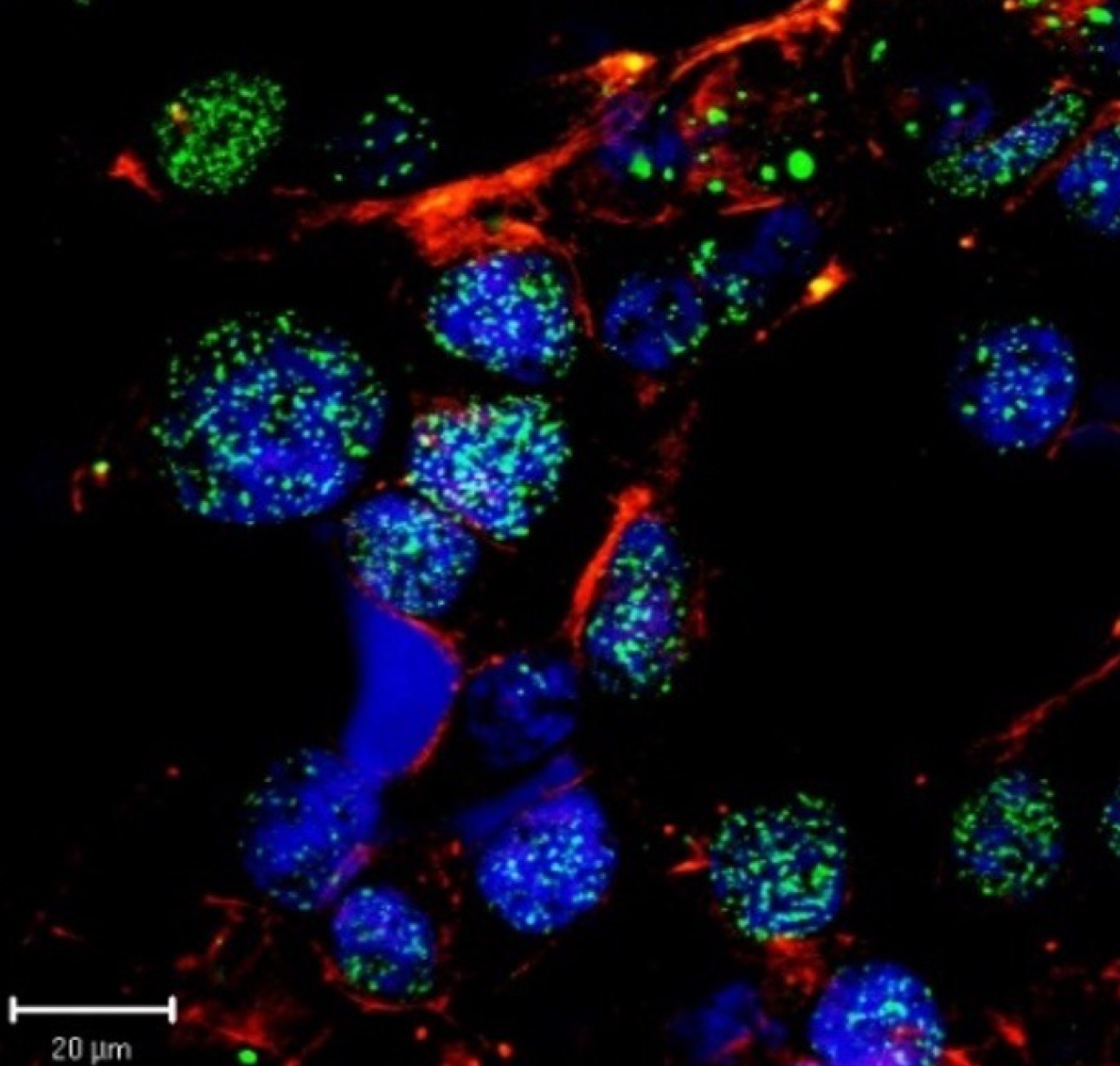

Here’s a batch of fresh news and announcements from across Imperial.
From an initiative that is pairing parliamentarians with researchers, to a study into making cancer cells vulnerable to treatment, here is some quick-read news from across the College.
Swapping pipettes for policy
Dr Sarah Marzi, Imperial’s Edmond and Lily Safra Research Fellow and UK DRI Emerging Leader, was one of 30 scientists to participate in this year's Royal Society Pairing Scheme, an annual initiative that aims to build bridges between parliamentarians and researchers.
As part of the scheme, scientists drawn from universities across the UK and industry spent a week in Westminster participating in workshops, hearing from invited speakers and learning about how research can inform policymaking.
Dr Marzi commented: "The Royal Society Pairing Scheme was an outstanding opportunity to learn about policymaking and the ways in which scientists can get more directly involved in it.
“We got the chance to attend different parliamentary proceedings, including Select Committee meetings and All-Party Parliamentary Groups (APPGs). I was extremely fortunate to spend a day in parliament with Chi Onwurah MP, Shadow Minister for Science, Research & Digital. Overall, a brilliant experience!”
Shape of my heart
Researchers have uncovered the origin of the heart’s shape at the cellular level in zebrafish – a finding that could help to design better ways to shape lab-grown heart cells. The findings could help the field of tissue engineering, especially for cardiac tissue which is difficult to grow in vitro.
The academics found that when morphing into a bent heart shape, zebrafish heart cells each changed their own volume in specific areas of the developing heart. They also described the signalling pathways involved and how the cells convert mechanical cues into biochemical signals, highlighting the important role of the cells’ extracellular matrix.
Study lead author Dr Julien Vermot of the Department of Bioengineering said: “By studying this we can understand how to bend and shape heart tissues for applications like tissue engineering, which can grow lifesaving tissues like heart valves for people with heart disease.”
Read more about the study in Developmental Cell.
Investigating Jupiter’s aurora
 Dr Ali Sulaiman has been awarded a Science and Technology Facilities Council (STFC) Ernest Rutherford fellowship to study Jupiter’s aurora at Imperial’s Department of Physics. The fellowships provide exceptional researchers from diverse backgrounds with the opportunity to address exciting questions in the fields of astronomy, solar and planetary science, cosmology, and physics over the next five years.
Dr Ali Sulaiman has been awarded a Science and Technology Facilities Council (STFC) Ernest Rutherford fellowship to study Jupiter’s aurora at Imperial’s Department of Physics. The fellowships provide exceptional researchers from diverse backgrounds with the opportunity to address exciting questions in the fields of astronomy, solar and planetary science, cosmology, and physics over the next five years.
Earth's aurorae, seen as the Northern and Southern lights, are linked to the Sun. But discoveries over the past few decades have revealed Jupiter's aurora primarily has its origins in the prodigious volcanic activity of its moon Io.
However, the microphysical processes driving interactions between electromagnetic waves and auroral charged particles are poorly understood. Fuelled by the waves, the particles are accelerated to high energies as they crash into Jupiter's polar atmosphere. Dr Sulaiman’s work will investigate how and where the auroral particles are energised.
Read more about the Ernest Rutherford fellowships on the STFC’s website.
Making cancer cells vulnerable
 Prostate cancer cells can become ineffective at repairing their own damaged DNA and this makes them vulnerable to chemotherapy and other treatments. However, some cancers do not have this problem, so they are resistant to treatments.
Prostate cancer cells can become ineffective at repairing their own damaged DNA and this makes them vulnerable to chemotherapy and other treatments. However, some cancers do not have this problem, so they are resistant to treatments.
Dr Claire Fletcher and her colleagues in the Department of Surgery and Cancer have discovered a possible solution. They have found that a tiny strand of RNA, called miR-346, can mimic ineffective DNA repair in cancer cells, turning them from drug-resistant into drug-sensitive cells.
So far, the technique has shown promise in cancer cells and mice in the lab. Dr Fletcher said: “Next steps will be to conduct pre-clinical studies to understand its efficacy, stability and metabolism, with a view to subsequent clinical trials.” If the research progresses, it could ultimately mean that prostate cancer treatments would work for more patients.
Read more about the study in Molecular Cancer. Want to be kept up to date on news at Imperial? Sign up for our free quick-read daily e-newsletter, Imperial Today.
Want to be kept up to date on news at Imperial? Sign up for our free quick-read daily e-newsletter, Imperial Today.
Article text (excluding photos or graphics) © Imperial College London.
Photos and graphics subject to third party copyright used with permission or © Imperial College London.
Reporters
Caroline Brogan
Communications Division

Contact details
Tel: +44 (0)20 7594 3415
Email: caroline.brogan@imperial.ac.uk
Show all stories by this author

Ms Genevieve Timmins
Academic Services

Contact details
Email: press.office@imperial.ac.uk
Show all stories by this author
Kerry Noble
Department of Surgery & Cancer

Contact details
Email: press.office@imperial.ac.uk
Show all stories by this author
Hayley Dunning
Communications Division

Contact details
Tel: +44 (0)20 7594 2412
Email: h.dunning@imperial.ac.uk
Show all stories by this author




Leave a comment
Your comment may be published, displaying your name as you provide it, unless you request otherwise. Your contact details will never be published.